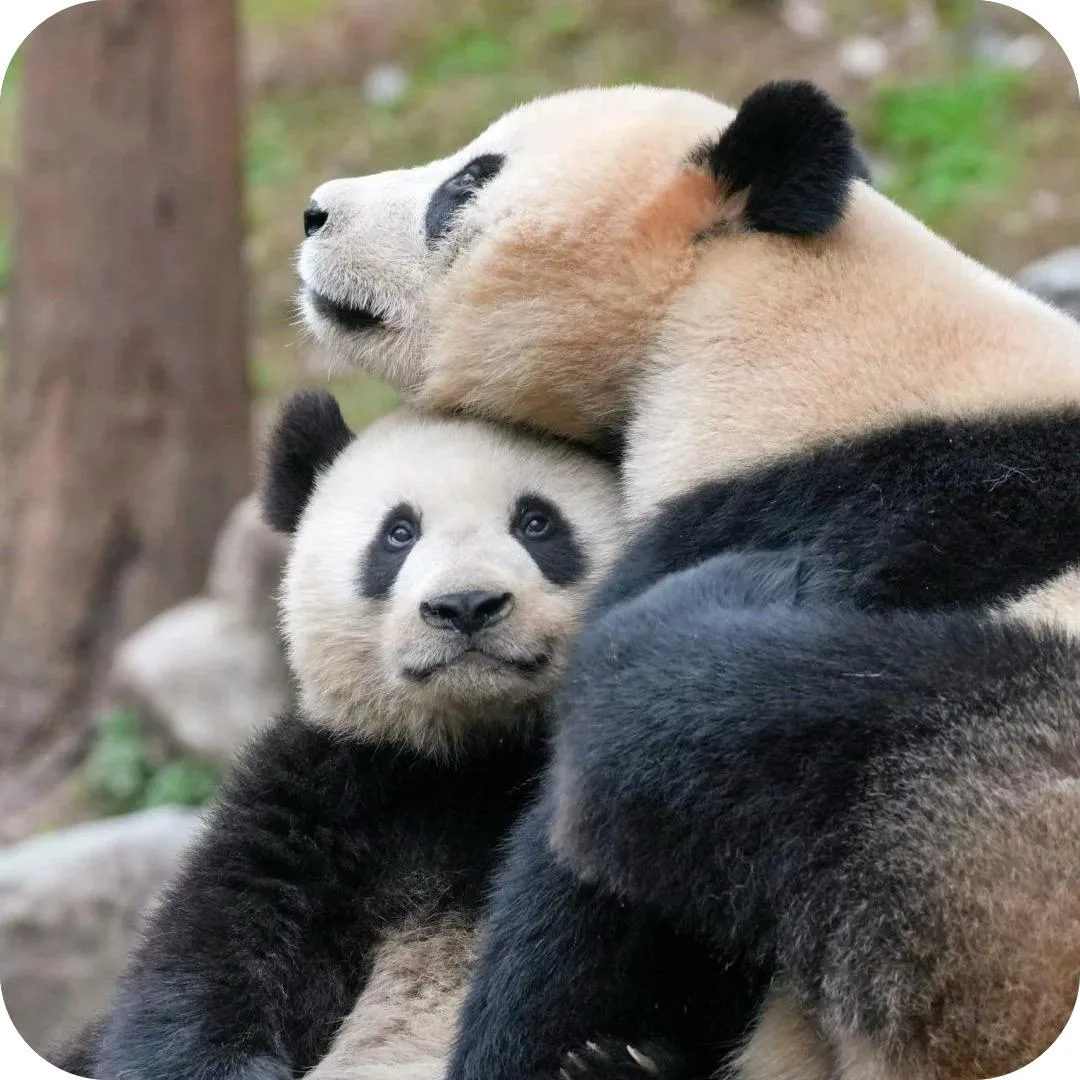A baby panda, often referred to as a cub, is one of the most adorable creatures in the animal kingdom. At birth, panda cubs are tiny, fragile, and underdeveloped, making them quite different from what we imagine when we think of an adult panda. Here’s a detailed breakdown of a baby panda’s appearance at various stages of its early life:
At Birth (1-2 months old)
- Size: A newborn panda is incredibly small, weighing only about 100 to 200 grams (3.5 to 7 ounces), which is roughly 1/900th of the mother’s weight. This is significantly lighter than other bear species.
- Fur: At birth, a panda cub is covered in pink skin, and it has no fur at all. It remains this way for a few weeks, and its skin is so translucent that you can see the faint outline of its developing organs. As it begins to grow, it gradually develops a soft, fine layer of white fur.
- Eyes and Ears: The cub’s eyes and ears are closed at birth. They start to open at around 4 to 6 weeks old. Before then, the cub relies heavily on its sense of touch and smell to navigate its environment.
- Body: The cub’s body is quite underdeveloped. Its limbs are weak, and it is not yet capable of moving around independently. It remains dependent on the mother for warmth, nutrition, and protection (Why Are Giant Panda Cubs So Small at Birth?).
Early Growth Stage (2-6 months old)
- Fur: The cub’s fur starts to grow, initially in patches of black and white. It’s still quite soft and downy but begins to thicken and cover most of its body. By the end of this stage, the cub has a distinct black-and-white coloration, though the black fur patches may still be fuzzy and not as sharply defined as in adult pandas.
- Size: By about 6 months, a baby panda’s size has increased dramatically. It may weigh between 5 to 7 kilograms (about 11 to 15 pounds), which is roughly 30 to 50 times its birth weight. It still remains small compared to an adult panda but is noticeably larger.
- Eyes and Ears: The cub’s eyes are fully open, and it begins to explore its surroundings. Its ears are more developed, and the cub can hear better by this age, although it may still be cautious and reliant on its mother.
- Limbs: The baby panda’s legs are still quite weak, but it starts crawling and may even try to stand for short periods. By 6 months, it begins to walk with a wobbly gait, but it is far from being able to move independently for long distances.
Later Growth Stages (6 months – 1 year old)
- Size: A panda cub grows steadily during this period, reaching about 10 to 18 kilograms (22 to 40 pounds) by the time it is 1 year old. While it’s still much smaller than an adult panda, the cub now has a more robust appearance.
- Fur: The panda’s fur becomes denser and coarser as it matures. Its iconic black-and-white fur is now well-defined, with black fur around the ears, eyes, legs, and shoulders, while the rest of the body remains predominantly white.
- Face: The panda’s face becomes rounder, and the cub’s characteristic black eye patches start to become more distinct, giving it the panda’s signature look. The black fur around the eyes looks like a mask, and the face becomes softer and more expressive as the cub matures.
- Teeth and Diet: By around 7-8 months, baby pandas begin to eat more bamboo alongside their mother’s milk. Their teeth start developing, and they begin to chew on bamboo stalks, although they are still dependent on their mother for milk (What do baby pandas eat?).

As a passionate panda lover, I’m here to share the unique stories and wonders of each panda. Through these posts, I hope to spread the love for these adorable giants and inspire others to join the effort to protect them. Let’s celebrate the magic of pandas together and help ensure their future!

